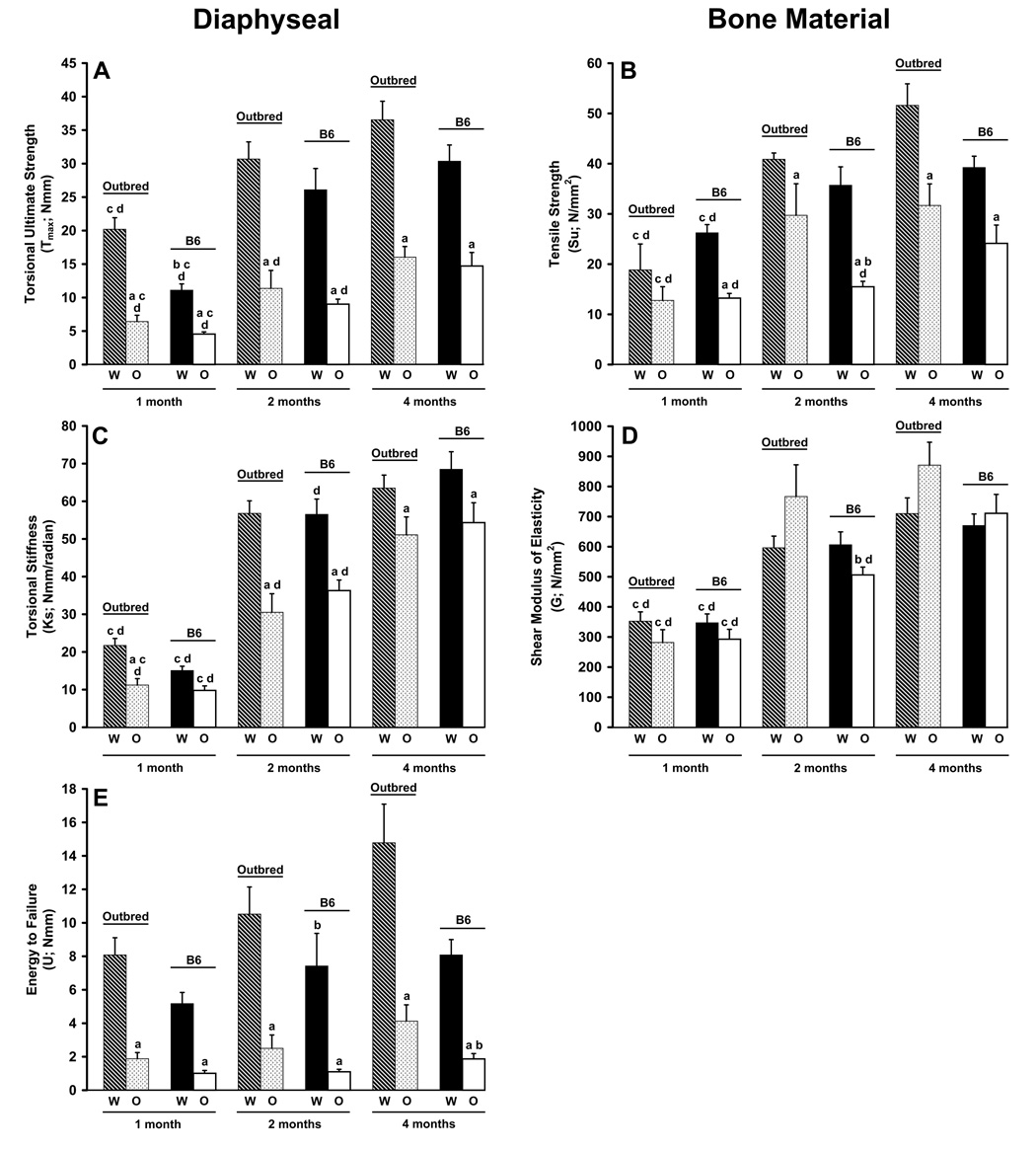Figure 5.
Femoral diaphyseal structural and cortical bone material biomechanical properties determined by torsional loading to failure. Diaphyseal A) torsional loading to failure Tmax and cortical bone B) tensile strength Su improve with age in both strains and genotypes, although oim/oim remain weaker than Wt at all ages. Diaphyseal E) energy to failure U was significantly reduced in oim/oim femurs as compared to Wt in both strains and at all ages. Diaphyseal C) torsional stiffness K and cortical bone D) shear modulus of elasticity G increased in both strains and genotypes with age. ap≤0.05 as compared to Wt femurs of the same strain and age; bp≤0.05 as compared to outbred femurs of the same genotype and age; cp≤0.05 as compared to 2 month femurs of the same genotype and strain; dp≤0.05 as compared to 4 month femurs of the same genotype and strain. [per age class: Wt, n=8–12; oim/+, n=6–12; oim/oim, n=6–12]

